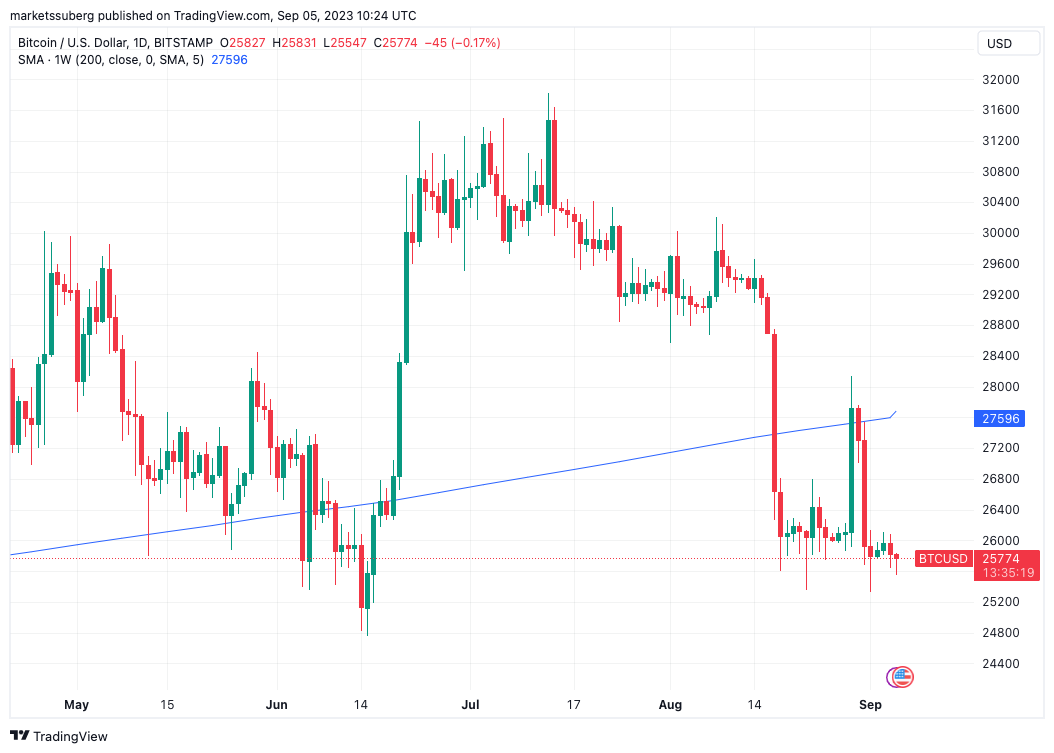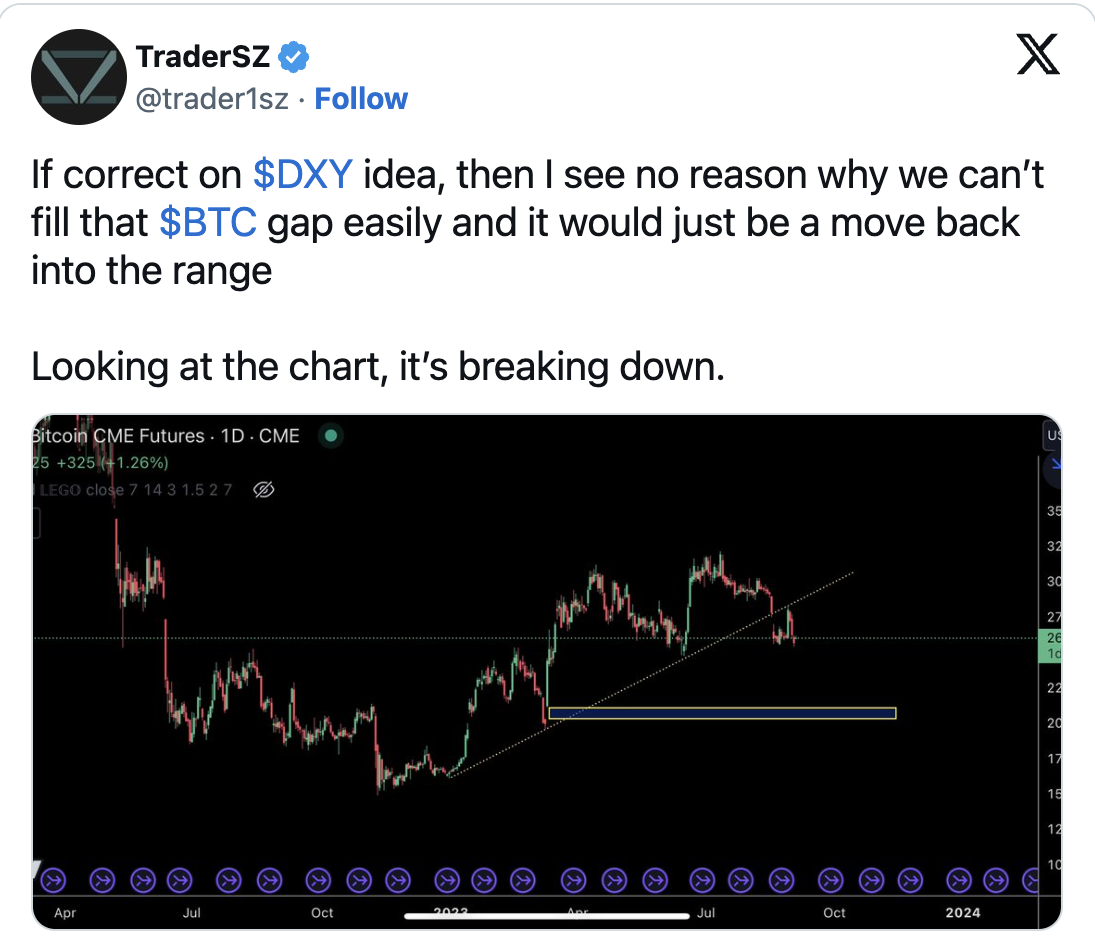Bitcoin experienced a slow decline in September, and neither bulls nor bears were able to establish a clear trend. Analysts closely monitor Bitcoin’s performance around the 200-week moving average (MA) and the strength of the US dollar is seen as a factor that affects the course of the crypto market. Supply and demand zones determine the price boundaries and investors hope that Bitcoin will stay above the $26,000 level.
Bitcoin Shows Chance for Buying
According to TradingView data, BTC price performance has not been impressive this month and the BTC/USD pair is moving towards creating classic September losses. Large-volume investors are on the sidelines watching and the area around $26,000 is already a familiar zone for Bitcoin in 2023.
The current spot price is surrounded by trend lines that analysts argue help limit volatility. Bitcoin lost some levels of support with a decline of over 10% in August, with the 200-week moving average (MA) being the main one. Popular investor and analyst Rekt Capital commented on a chart showing the levels to watch, highlighting the importance of the 200-week MA in bear markets:
“For much of Bitcoin’s history, the 200-week MA (blue in the chart above) acted as a generational bottoming zone.”
Rekt Capital also noted that the current four-year price cycle is behaving differently from the previous one:
“In March 2020, BTC had a downward fluctuation below the 200-week MA but still held the 200-week MA as support. In this cycle, the situation is different: BTC has formed an Accumulation Area below the 200-week MA and although BTC recently turned the 200-week MA into a new resistance, it seems to suggest that the price could stay below this important MA in the coming weeks, maintaining the principle of offering buying opportunities for long-term BTC investors.”

As of September 5, the 200-week MA is at $27,680, about $2,000 above the spot price.
The Strength of the Dollar Challenges Macro Calmness
Due to the United States being on holiday on September 4, there was less chance of a significant trend change in the crypto markets over the weekend. This situation may change with the opening of Wall Street on September 5, but for now, the off-hours BTC price movement reveals the current situation.
The US dollar index (DXY), which is known to have an inverse effect on BTC price movements during volatile periods, continues its upward trend since mid-July. DXY, which showed a 0.5% increase during the day, challenges the local high at the end of May.

Popular trader TraderSZ stated to X subscribers that resistance has now turned into support regarding the strength of the dollar in monthly time frames. TraderSZ further warned that Bitcoin could ultimately suffer and even a return to a region near $20,000 is a possibility.

Supply and Demand Keep BTC Price Stable
Supply and demand zones in Bitcoin are attracting the attention of popular trader Skew, and the potential downside is limited above $25,000. Skew acknowledged that not much has changed during the day and shared a chart on X showing the possible boundaries of future price movements.
Skew stated during the day that Bitcoin bulls need to reclaim $26,200, the lowest level in the 12-hour range, for further upside, otherwise, the price could retest the 12-hour demand and go lower again.


 Türkçe
Türkçe Español
Español








